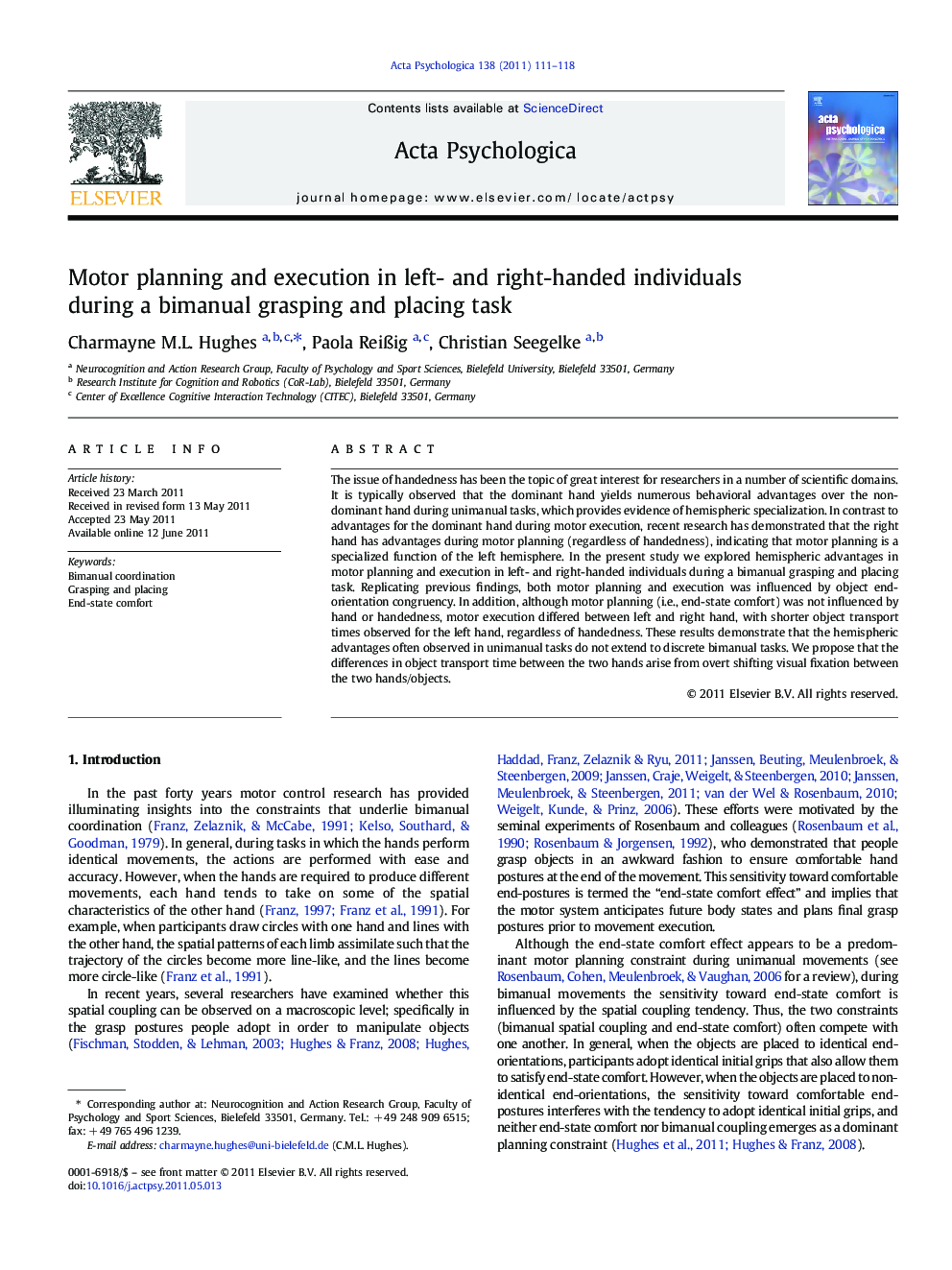| Article ID | Journal | Published Year | Pages | File Type |
|---|---|---|---|---|
| 920178 | Acta Psychologica | 2011 | 8 Pages |
The issue of handedness has been the topic of great interest for researchers in a number of scientific domains. It is typically observed that the dominant hand yields numerous behavioral advantages over the non-dominant hand during unimanual tasks, which provides evidence of hemispheric specialization. In contrast to advantages for the dominant hand during motor execution, recent research has demonstrated that the right hand has advantages during motor planning (regardless of handedness), indicating that motor planning is a specialized function of the left hemisphere. In the present study we explored hemispheric advantages in motor planning and execution in left- and right-handed individuals during a bimanual grasping and placing task. Replicating previous findings, both motor planning and execution was influenced by object end-orientation congruency. In addition, although motor planning (i.e., end-state comfort) was not influenced by hand or handedness, motor execution differed between left and right hand, with shorter object transport times observed for the left hand, regardless of handedness. These results demonstrate that the hemispheric advantages often observed in unimanual tasks do not extend to discrete bimanual tasks. We propose that the differences in object transport time between the two hands arise from overt shifting visual fixation between the two hands/objects.
Research highlights► We examined motor planning and execution during a bimanual grasping and placing task. ► We sought to ascertain whether these processes are mediated by hand and handedness. ► Initial grasp postures were similar regardless of hand and handedness. ► Object transport times were shorter for the left hand, regardless of handedness. ► The hemispheric advantages in motor planning and execution do not extend to discrete bimanual tasks.
